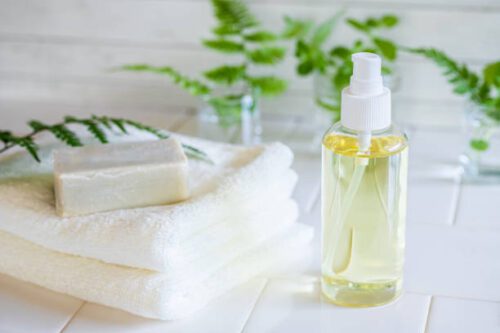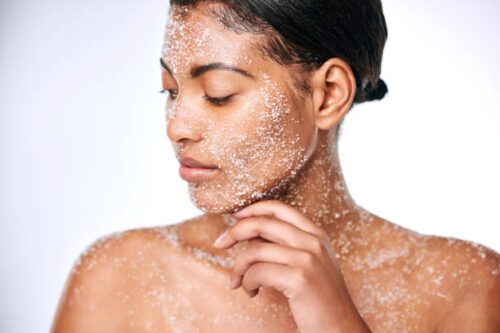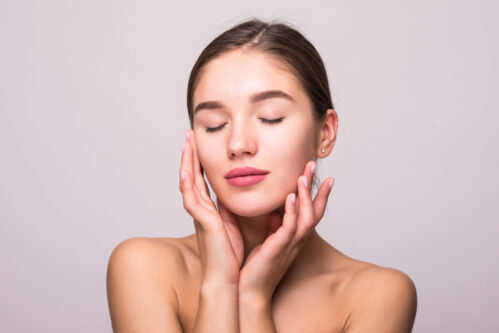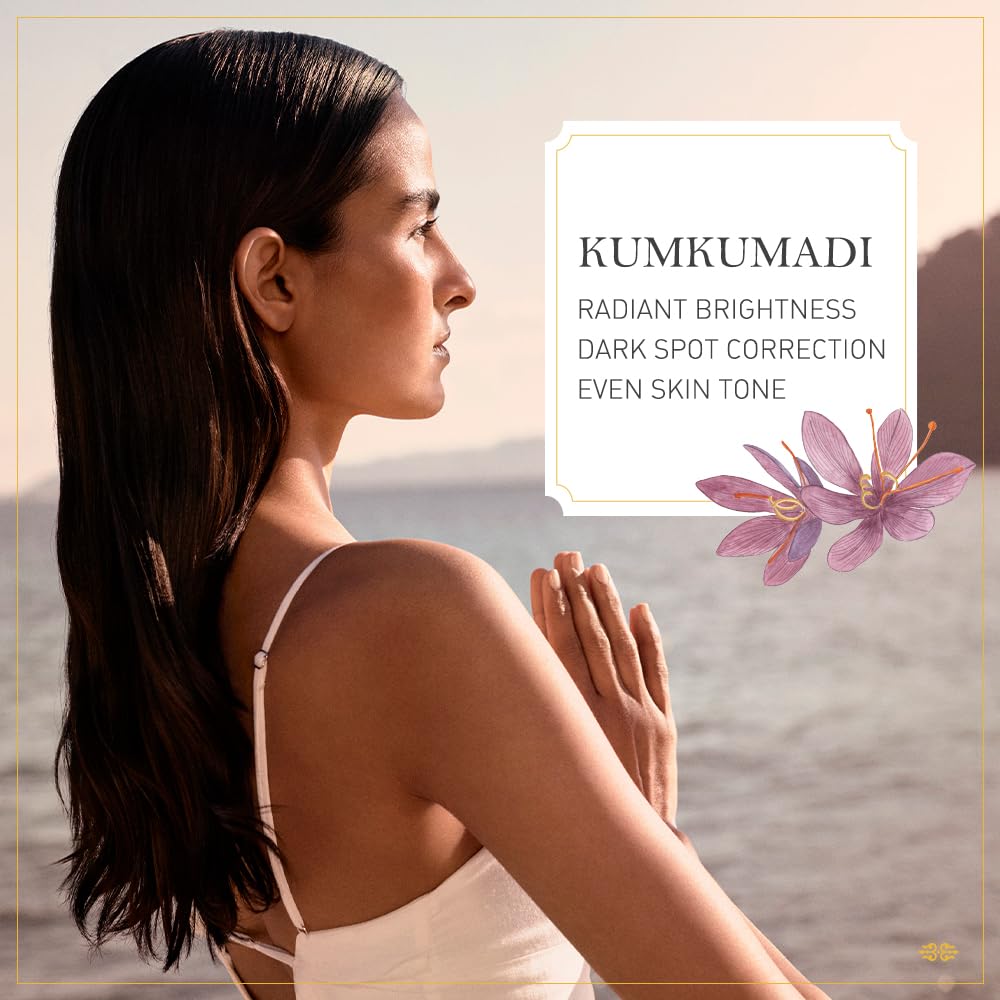Ayurvedic Skincare In the realm of beauty and skincare, Ayurveda, the ancient Indian system of holistic wellness, has gained immense popularity in recent years. With its focus on natural ingredients, balance, and holistic well-being, Ayurvedic beauty practices have become a game-changer for those seeking a healthier, more radiant complexion. In this comprehensive guide, we will walk you through the intricate world of Ayurvedic beauty and unveil a step-by-step approach to building your perfect skincare routine.
The Foundations of Ayurvedic Beauty
Ayurveda is deeply rooted in the concept of balance. It categorizes individuals into three primary doshas—Vata, Pitta, and Kapha—each associated with specific physical and emotional characteristics. Your dosha determines the skincare regimen that will best suit your unique needs.
Determining Your Dosha
Identifying your dosha is the first step towards tailoring your skincare routine. This can be done through online quizzes, consultations with Ayurvedic practitioners, or self-assessment based on characteristic traits. Once you know your dosha, you can select products and practices that harmonize with your constitution.
1. Cleansing: The Pillar of Ayurvedic Beauty
Oil Cleansing
In Ayurvedic beauty practices, oil cleansing takes center stage. This method might sound counterintuitive, but it’s a fundamental step in achieving clear and healthy skin. Oil has the unique ability to dissolve oil, making it a superb choice for deep cleansing without stripping your skin of its natural oils.
Here’s how to incorporate oil cleansing into your Ayurvedic skincare routine:
1. Choose the Right Oil: The first step is selecting an oil that suits your dosha (Vata, Pitta, or Kapha). For Vata skin, consider almond or sesame oil. Pitta skin benefits from coconut or sunflower oil, while Kapha skin thrives with grapeseed or castor oil.
2. Gently Massage: Take a small amount of your chosen oil and gently massage it into your skin. Use slow, circular motions, allowing the oil to penetrate and dissolve impurities.
3. Steam It: To enhance the cleansing process, soak a cloth in hot water, wring it out, and place it over your face. The steam helps open your pores and allows the oil to penetrate deeper.
4. Remove Impurities: After a few minutes, use the same cloth to gently wipe away the oil and impurities. Your skin will feel clean and nourished.
5. Moisturize: Oil cleansing not only cleans your skin but also provides hydration. You may find that your skin doesn’t require an additional moisturizer after this process.
Oil cleansing, when done correctly, leaves your skin refreshed, clean, and glowing, making it a key element in your Ayurvedic beauty routine.
Herbal Cleansers in Ayurvedic Beauty
In Ayurvedic beauty, herbal cleansers play a vital role in maintaining clean and healthy skin. These natural cleansers are gentle, effective, and align perfectly with the holistic principles of Ayurveda. Here, we’ll explore the world of herbal cleansers and how to incorporate them into your skincare routine.
Why Herbal Cleansers?
Herbal cleansers are a preferred choice in Ayurvedic skincare for several reasons:
Natural Ingredients: Ayurveda emphasizes the use of natural ingredients, and herbal cleansers are made from botanical elements like Neem, Tulsi, Turmeric, and more. These ingredients have been used for centuries due to their skin-friendly properties.
Gentle Cleansing: Herbal cleansers provide effective yet gentle cleansing. They remove impurities, dirt, and excess oil without causing harm or dryness to the skin.
Balancing Doshas: Many herbal cleansers are formulated to align with specific doshas, ensuring that your skincare routine is customized to your unique constitution.
Incorporating Herbal Cleansers
Here’s how to include herbal cleansers in your Ayurvedic skincare routine:
1. Choose the Right Cleanser: Select an herbal cleanser that suits your dosha. This aligns the product with your unique skin needs.
2. Dampen Your Face: Before applying the cleanser, dampen your face with lukewarm water. This prepares your skin for the cleansing process.
3. Apply the Cleanser: Take a small amount of the herbal cleanser and gently massage it onto your face and neck. Use upward and circular motions, ensuring even coverage.
4. Rinse Thoroughly: After massaging for a minute or two, rinse the cleanser off with lukewarm water. Pat your face dry with a clean towel.
5. Follow with Toning and Moisturizing: After cleansing, it’s important to follow up with a toner and moisturizer that suits your dosha for a well-rounded skincare routine.
Popular Herbal Ingredients:
- Neem: Known for its antibacterial and anti-inflammatory properties, Neem is excellent for acne-prone skin.
- Tulsi (Holy Basil): Tulsi is revered for its purifying and soothing qualities. It’s especially beneficial for Pitta skin types.
- Turmeric: Turmeric is a powerful antioxidant with anti-inflammatory properties. It can brighten the skin and reduce blemishes.
- Herbal cleansers provide a holistic approach to skincare in line with Ayurvedic principles. They not only cleanse but also nourish, leaving your skin refreshed and rejuvenated.
- Incorporating these cleansers into your daily routine can help you maintain a healthy and radiant complexion, all while staying true to the timeless wisdom of Ayurvedic beauty.
2. Exfoliation: Reviving Your Skin’s Glow
Exfoliation: Reviving Your Skin’s Glow
Exfoliation is a crucial step in any skincare routine, and in the realm of Ayurvedic beauty, it’s no different. This process involves the removal of dead skin cells, allowing your skin to breathe and regenerate. Ayurvedic exfoliants are gentle yet effective, ensuring that you don’t harm your skin in the pursuit of a radiant complexion.
Here are some Ayurvedic methods of exfoliation that can help you achieve glowing, healthy skin:
Besan (Chickpea Flour) Exfoliation
Besan, also known as chickpea flour, is a beloved exfoliant in Ayurvedic skincare. This natural ingredient is readily available and easy to use. Here’s how to incorporate besan into your routine:
1. Prepare a Paste: Take a small amount of besan and mix it with water or yogurt to create a smooth paste. The consistency should be thick enough to apply easily but not too runny.
2. Apply Gently: With clean, damp skin, apply the besan paste in gentle, circular motions. Avoid scrubbing too vigorously to prevent skin irritation.
3. Rinse Off: After a few minutes, when the paste has dried slightly, rinse it off with lukewarm water. Pat your face dry with a clean towel.
Besan exfoliation helps in removing dead skin cells, excess oil, and impurities. It leaves your skin feeling smoother and more radiant. The gentle nature of besan makes it suitable for all skin types.
Ubtan: The Traditional Ayurvedic Exfoliant
Ubtan is a traditional Ayurvedic mixture of herbs and grains that has been used for centuries to cleanse and exfoliate the skin. What’s wonderful about Ubtan is that you can customize it to suit your dosha, ensuring a personalized skincare experience. Here’s how to use Ubtan:
1. Create Your Ubtan Mix: Depending on your dosha, you can create a custom Ubtan mix. For Vata skin, use ingredients like almond powder and rose petals. For Pitta skin, try sandalwood and turmeric. Kapha skin benefits from ingredients like oatmeal and neem powder.
2. Add a Liquid: Mix your chosen Ubtan ingredients with a liquid. This can be plain water, milk, yogurt, or rosewater. The consistency should be a thick paste.
3. Apply and Massage: Apply the Ubtan paste to your face and neck, and gently massage it in using circular motions. The herbs and grains in the Ubtan help in removing dead skin cells and impurities.
4. Rinse Off: After a few minutes, rinse off the Ubtan with lukewarm water. Pat your face dry with a clean towel.
Ubtan exfoliation is a luxurious and holistic approach to skincare. It not only removes dead skin cells but also nourishes and rejuvenates your skin, leaving it with a beautiful, natural glow.
Incorporating these Ayurvedic exfoliation methods into your skincare routine will help you achieve a vibrant and healthy complexion. They are gentle, effective, and in alignment with the principles of Ayurvedic beauty, making them a valuable addition to your daily regimen.
3. Hydration: Nourishing Your Skin
Hydrating your skin is a fundamental aspect of any skincare routine, and in Ayurvedic beauty, it takes on a holistic approach. Proper hydration not only keeps your skin looking healthy and radiant but also plays a significant role in maintaining your overall well-being.
Here’s how Ayurvedic principles can guide you in nourishing and hydrating your skin:
Moisturizing Oils
In Ayurvedic skincare, selecting the right oil for your skin type is crucial for maintaining hydration. Different doshas have distinct oil preferences, and choosing the appropriate one ensures balance and nourishment.
1. Coconut Oil: Coconut oil is an excellent choice for Pitta skin, thanks to its cooling properties. It helps soothe and moisturize sensitive skin prone to redness and inflammation.
2. Almond Oil: For Vata skin, almond oil is a top pick. Its rich, emollient properties help combat dryness, keeping the skin supple and hydrated.
3. Sesame Oil: Kapha skin benefits from sesame oil due to its lightweight nature. It provides the necessary moisture without making the skin feel heavy or greasy.
How to Use Moisturizing Oils:
After cleansing, apply a small amount of your chosen oil to damp skin. Gently massage it in using upward and circular motions. This helps lock in moisture and ensures your skin remains soft and hydrated.
Hydrating Foods
In Ayurvedic beauty, skincare goes beyond external applications. Your diet plays a significant role in maintaining skin hydration. Including hydrating foods in your daily meals can significantly impact your skin’s health.
1. Cucumbers: Cucumbers are a hydrating powerhouse, consisting of over 90% water. Incorporating them into your diet or using cucumber slices topically can help keep your skin supple.
2. Watermelons: Watermelon is not only a delicious fruit but also a source of hydration. It’s packed with water and essential vitamins that benefit your skin.
3. Leafy Greens: Vegetables like lettuce and spinach have high water content and are rich in nutrients. They help nourish your skin from the inside out.
Consuming these hydrating foods can keep your skin well-moisturized and promote a healthy complexion. Remember that Ayurveda places a strong emphasis on the connection between your diet, dosha, and skin health.
By incorporating both external and internal hydration methods, you can ensure that your skin remains nourished and radiant. Hydration is a cornerstone of Ayurvedic beauty, and when done correctly, it contributes to a balanced and glowing complexion.
4. Sun Protection: Shielding Your Skin
Protecting your skin from the sun’s harmful rays is a vital aspect of Ayurvedic beauty. Ayurveda recognizes that excessive sun exposure can lead to dosha imbalances and skin damage, making it essential to implement effective sun protection measures. Here are some Ayurvedic methods to shield your skin from the sun:
Sandalwood Paste
Sandalwood paste is a natural sunscreen in Ayurvedic skincare. It has been used for centuries due to its cooling and soothing properties. Sandalwood not only provides sun protection but also helps in reducing inflammation and maintaining skin clarity.
How to Use Sandalwood Paste:
Mix sandalwood powder with water to create a thick paste.
Apply the paste to your face and exposed areas before heading out into the sun.
Leave it on for about 15-20 minutes to allow it to dry and provide a protective barrier.
Rinse it off with lukewarm water when you return indoors.
Sandalwood paste acts as a natural sunblock, protecting your skin from harmful UV rays. It’s particularly beneficial for Pitta skin types, which are prone to sun sensitivity.
Wide-Brimmed Hats
In Ayurvedic beauty, practical accessories like wide-brimmed hats are highly recommended to protect your face and neck from direct sunlight. Not only do these hats offer sun protection, but they also add a touch of style to your overall look.
When selecting a wide-brimmed hat, choose one that complements your style and covers your face and neck adequately. This accessory serves as an additional layer of protection against the sun’s harsh rays, reducing the risk of sunburn and skin damage.
Incorporating these Ayurvedic sun protection methods into your daily routine can help shield your skin from the sun’s harmful effects. By using natural sunscreens like sandalwood paste and embracing practical accessories such as wide-brimmed hats, you can ensure that your skin remains healthy, balanced, and protected from the sun’s rays.
5. Ayurvedic Facials: A Luxurious Treat for Your Skin
In the realm of Ayurvedic beauty, a luxurious Ayurvedic facial is a holistic approach to skincare that not only nourishes your skin but also rejuvenates your body and mind. These facials are tailored to your unique dosha and often include nourishing masks, herbal steams, and gentle massages. Let’s delve into the world of Ayurvedic facials and discover why they’re a true indulgence for your skin.
Customized to Your Dosha:
The foundation of Ayurvedic facials is the recognition that every individual is unique, and their skincare needs should be addressed accordingly. Your dosha, or mind-body constitution (Vata, Pitta, or Kapha), plays a significant role in determining the products and techniques used during your facial. Here’s how Ayurvedic facials are customized:
1. Vata Skin: For those with a Vata constitution, Ayurvedic facials often involve nourishing and warming ingredients. Oils like sesame and almond are used, and the facial focuses on hydrating and calming the skin.
2. Pitta Skin: Pitta individuals benefit from cooling and soothing facials. Ingredients like sandalwood and rose are often used to reduce inflammation and redness, common issues for Pitta skin.
3. Kapha Skin: Kapha skin facials aim to invigorate and balance. They typically include ingredients like turmeric and neem to combat oiliness and congestion.
Key Components of Ayurvedic Facials:
Ayurvedic facials encompass a series of steps that combine to create a nourishing and revitalizing experience for your skin and overall well-being:
1. Cleansing: The facial begins with a gentle cleansing using dosha-specific cleansers to remove dirt and impurities.
2. Steam: Herbal steam infused with aromatic herbs is used to open your pores and prepare your skin for the next steps.
3. Exfoliation: A mild Ayurvedic exfoliant, often made with natural ingredients like chickpea flour (besan) or herbal mixtures (ubtan), is applied to remove dead skin cells.
4. Nourishing Mask: A customized mask made from natural ingredients is applied to deeply nourish your skin. It’s left on for a specific duration to maximize absorption.
5. Massage: A gentle, dosha-specific facial massage promotes circulation, relaxes facial muscles, and enhances the absorption of nourishing oils.
6. Toning: A dosha-specific toner is applied to balance and hydrate the skin.
7. Moisturizing: The final step involves the application of a dosha-specific moisturizer to lock in the benefits of the facial.
Ayurvedic facials offer a comprehensive approach to skincare, addressing both the physical and mental aspects of well-being. They provide a sense of relaxation and rejuvenation while leaving your skin feeling refreshed and revitalized.
Indulging in an Ayurvedic facial is not just a luxury; it’s an investment in your skin’s health and your overall balance and harmony. Whether you’re looking to address specific skin concerns or simply pamper yourself, an Ayurvedic facial is a truly holistic experience for your skin and soul.
Final Thoughts
Incorporating Ayurvedic beauty principles into your skincare routine can lead to a healthier and more radiant complexion. Remember to determine your dosha, select products that align with your constitution, and follow the steps outlined in this guide for a personalized and effective skincare regimen.









I learned so much from this article. Your explanations are clear, and your examples are spot on!